10 SaaS Marketing Automation Tools: Top Software for 2024
The top 10 SaaS marketing automation tools for 2024 that boost efficiency, enhance customer engagement, and drive revenue growth.

SaaS marketing automation tools play a crucial role in streamlining operations, improving customer engagement, and driving revenue growth.
With 63% of marketers automating email marketing activities and 50% automating social media management, the landscape of marketing is rapidly evolving.
In this guide, I'll explore the top 10 SaaS marketing automation tools available in 2024.
Key Takeaways
- Marketing automation tools can significantly enhance operational efficiency.
- A growing number of businesses are adopting these tools to improve customer engagement.
- Choosing the right tool can lead to greater ROI and streamlined processes.
Top 10 Picks for SaaS Marketing Automation Tools
- HubSpot - Best for comprehensive marketing solutions
- ActiveCampaign - Best for email marketing automation
- Mailchimp - Best for small businesses and startups
- Drip - Best for e-commerce businesses
- AdRoll - Best for retargeting and advertising
- Hotjar - Best for user behavior analytics
- Ortto - Best for modern customer journey analytics
- EngageBay - Best for budget-conscious businesses
- Customer.io - Best for targeted messaging
- Zapier - Best for workflow automation and app integration
How I Evaluated SaaS Marketing Automation Tools
My evaluation process for SaaS marketing automation tools focused on these key criteria:
- Features: I assessed the range of functionalities each tool offers.
- Pricing: I evaluated cost-effectiveness compared to competitors.
- Ease of Use: I considered the user experience and learning curve.
- Integration Capabilities: I reviewed how well the tools integrate with other platforms.
- Customer Support: I analyzed the availability and quality of customer service.
My methodology included testing the tools, consulting with industry experts, and conducting careful online research to ensure comprehensive insights.
SaaS Marketing Automation Tools Comparison Table
| Software | Best For | Key Features | Pricing | Free Plan | Platforms Available |
|---|---|---|---|---|---|
| HubSpot | Comprehensive marketing solutions | CRM, email marketing, lead management | $45/mo (Starter) | Yes | Web, iOS, Android |
| ActiveCampaign | Email marketing automation | CRM, segmentation, lead scoring | $15/mo (Basic) | Yes | Web |
| Mailchimp | Small businesses and startups | Email marketing, audience management | Free up to 1,000 contacts | Yes | Web, iOS, Android |
| Drip | E-commerce businesses | Visual workflow builder, e-commerce integrations | $39/mo | No | Web |
| AdRoll | Retargeting and advertising | Cross-channel advertising, analytics | From $36/mo | No | Web |
| Hotjar | User behavior analytics | Heatmaps, session recordings | $39/mo (Plus) | Yes | Web |
| Ortto | Modern customer journey analytics | Email/SMS marketing, analytics | $599/mo | No | Web |
| EngageBay | Budget-conscious businesses | Email marketing, CRM | $12.74/mo (Basic) | Yes | Web |
| Customer.io | Targeted messaging | User segmentation, A/B testing | $150/mo | Yes | Web |
| Zapier | Workflow automation | App integration, data management | $19/mo (Starter) | Yes | Web |
1. HubSpot
Best for comprehensive marketing solutions
HubSpot is an all-in-one platform that offers a robust suite of marketing tools, including CRM, email marketing, lead management, and analytics.
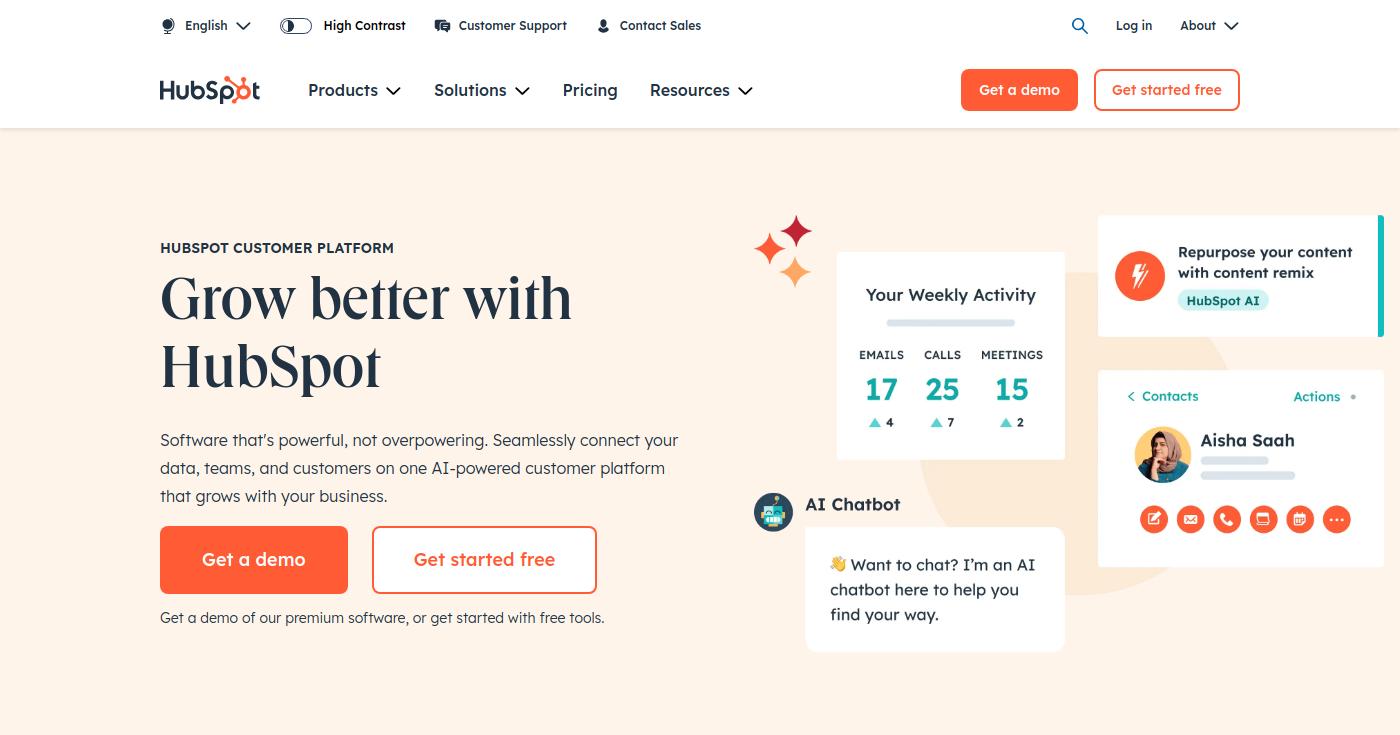
Its comprehensive features make it suitable for businesses of all sizes.
Pros
- Extensive features covering all marketing aspects.
- Excellent integrations with various platforms.
- User-friendly interface.
Cons
- Higher cost compared to some competitors.
- Can be overwhelming for beginners due to its extensive capabilities.
Key Features
- Comprehensive CRM: Manage interactions and data throughout the customer lifecycle.
- Email Marketing: Automate email campaigns with personalized content.
- Analytics and Reporting: Gain insights into campaign performance.
Pricing
HubSpot offers a free plan with essential features, while paid plans start from $45/month for the Starter package and can go up to $3,600/month for the Enterprise package. Explore more on their pricing page.
2. ActiveCampaign
Best for email marketing automation
ActiveCampaign excels in email marketing automation and integrates CRM functionalities to provide a comprehensive marketing solution.
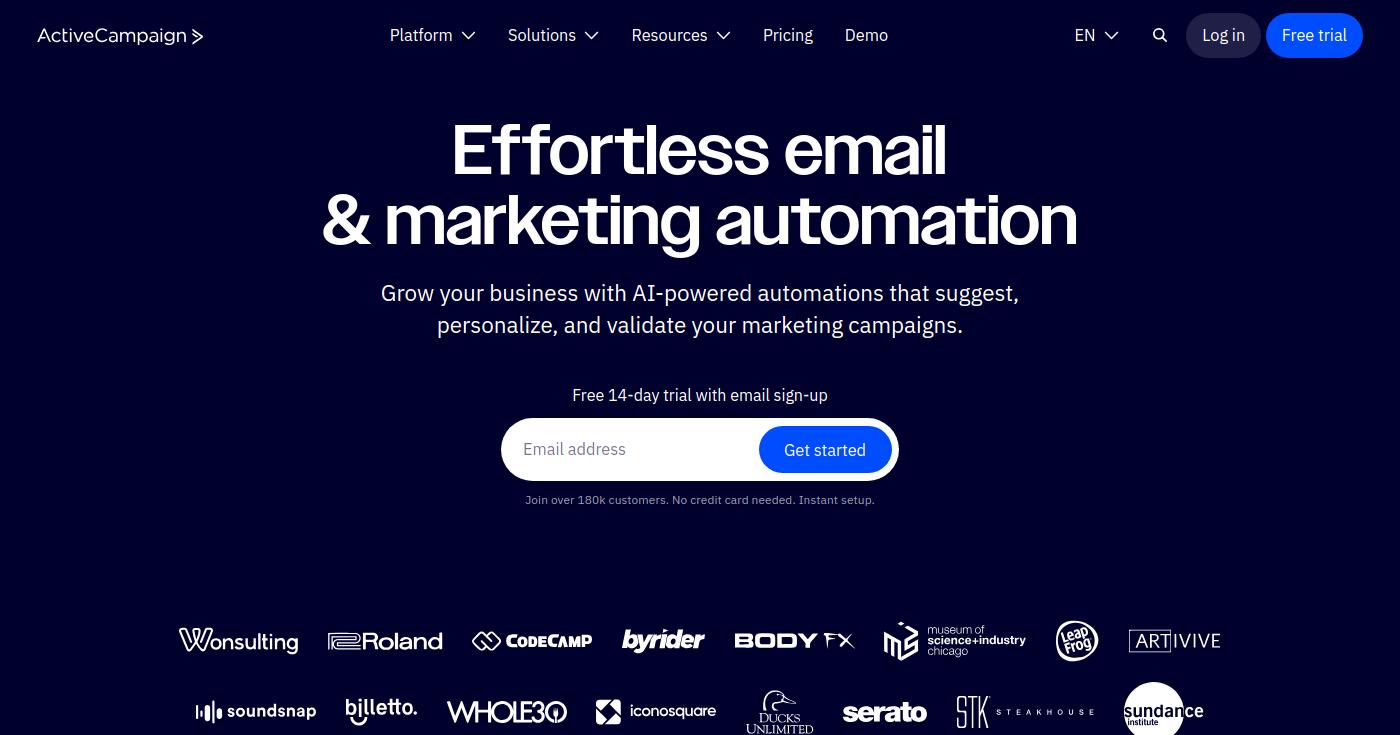
It's particularly effective for both B2C and B2B businesses.
Pros
- Affordable pricing structure.
- Excellent customer support.
- Powerful segmentation and automation features.
Cons
- Limited CMS capabilities.
- Not suited for high-touch sales processes.
Key Features
- Email Marketing Automation: Automate email campaigns based on user behavior.
- Segmentation: Create targeted campaigns using detailed customer profiles.
- Lead Scoring: Prioritize leads based on engagement and behavior.
Pricing
Starting at $15/month, ActiveCampaign offers various tiers, including Plus at $49/month and Professional at $149/month. For more details, visit their pricing page.
3. Mailchimp
Best for small businesses and startups
Mailchimp is a user-friendly tool that simplifies email marketing and is great for startups.
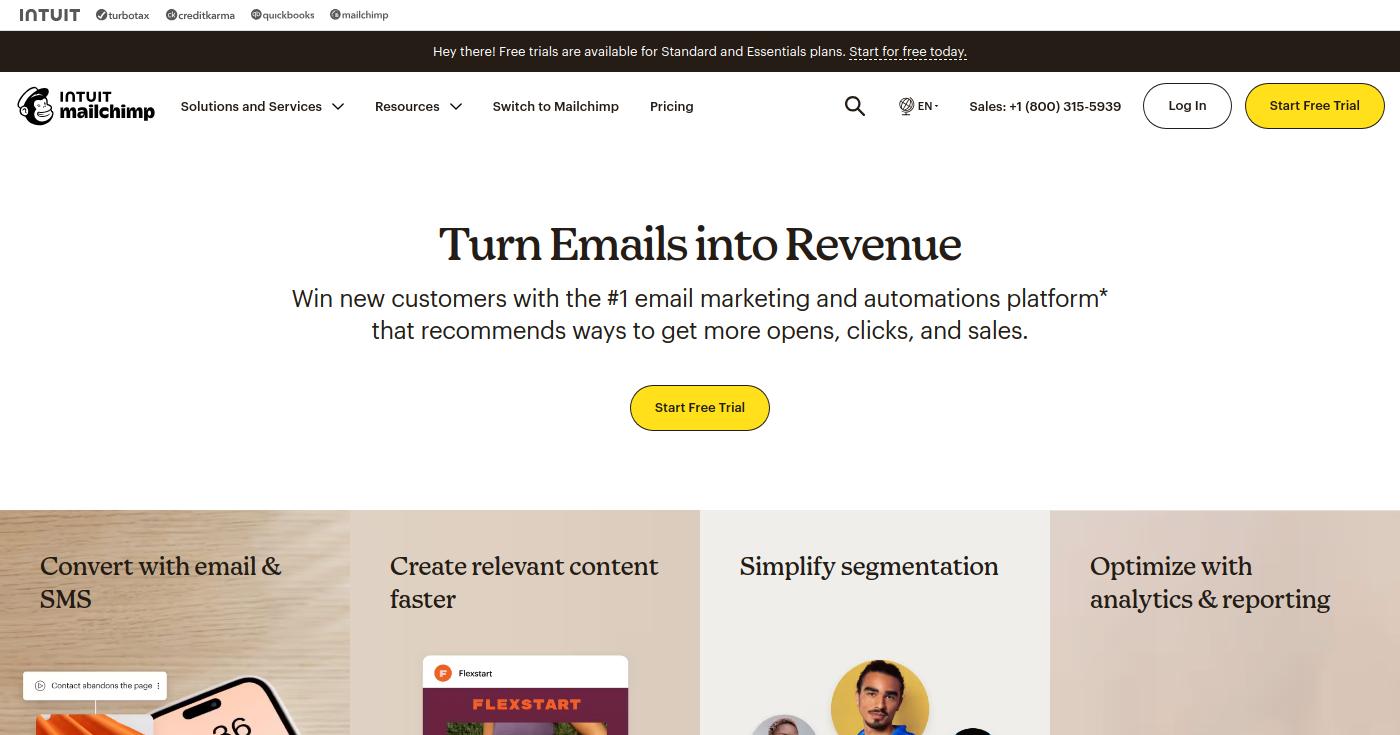
Its intuitive interface and strong capabilities make it a favorite among small businesses.
Pros
- Strong email marketing capabilities.
- Easy to use with a clean interface.
- Free tier available for small businesses.
Cons
- Pricing can increase significantly with larger contact lists.
- Limited automation features in the free plan.
Key Features
- Email Marketing: Create and send professional email campaigns.
- Audience Management: Segment your audience for targeted messaging.
- Analytics: Measure campaign performance with detailed reports.
Pricing
Mailchimp's free plan is available for up to 1,000 contacts, with paid plans starting at $13/month. Check their pricing page for more information.
4. Drip
Best for e-commerce businesses
Drip focuses on e-commerce marketing automation, offering robust features to manage customer journeys and optimize engagement through personalized experiences.

Pros
- Strong focus on e-commerce features.
- Visual workflow builder for easy campaign setup.
- Excellent for segmentation and personalization.
Cons
- Limited to e-commerce, not suitable for general marketing.
- Fewer templates compared to other platforms.
Key Features
- Visual Workflow Builder: Create automated customer journeys visually.
- E-commerce Integrations: Seamlessly integrate with popular e-commerce platforms.
- Advanced Analytics: Gain insights into customer behavior and campaign performance.
Pricing
Drip pricing starts at $39/month for up to 2,500 subscribers. Visit their pricing page for more details.
5. AdRoll
Best for retargeting and advertising
AdRoll offers a robust platform for cross-channel advertising and retargeting, making it ideal for brands looking to enhance their online visibility.
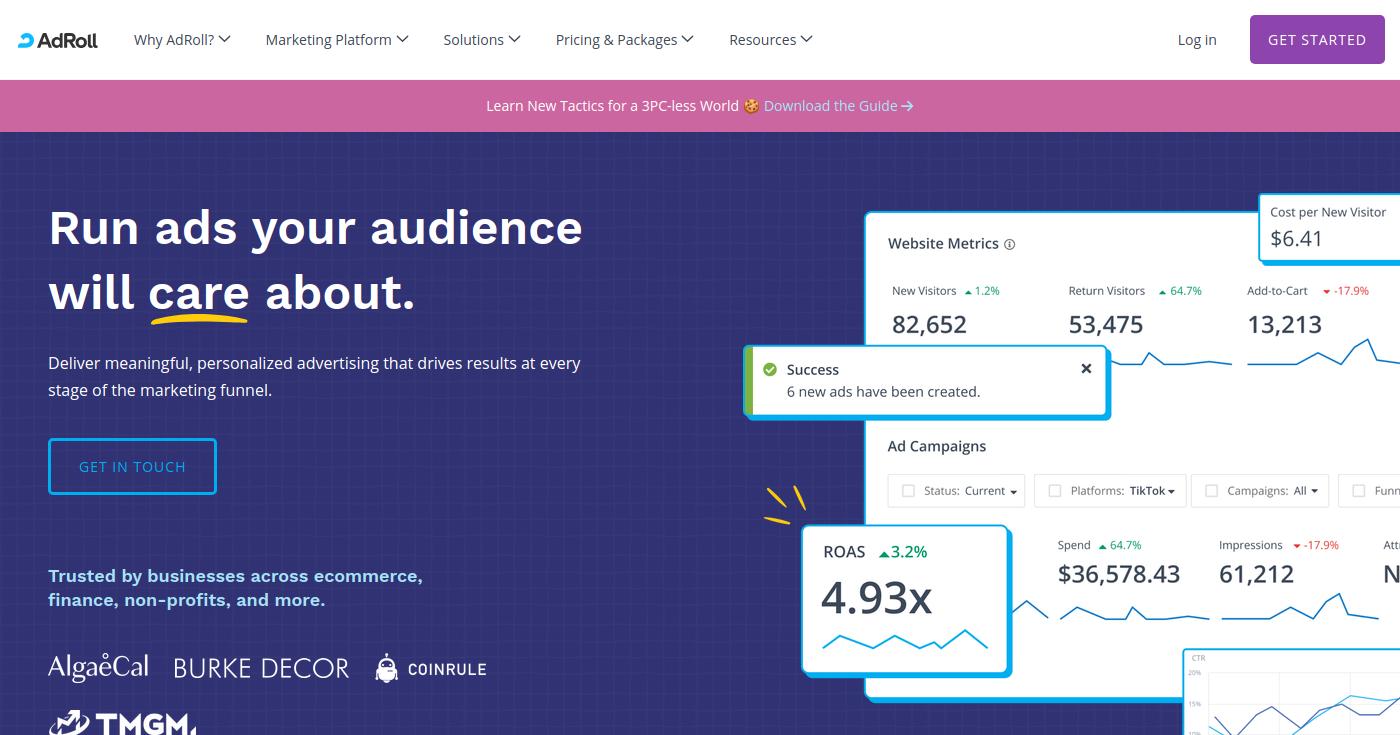
Pros
- Excellent for retargeting campaigns.
- Comprehensive advertising management features.
- Strong analytics to measure campaign effectiveness.
Cons
- Complex interface for new users.
- Might require a learning curve to navigate.
Key Features
- Cross-Channel Advertising: Run campaigns across various platforms.
- Retargeting Capabilities: Re-engage visitors who did not convert.
- Audience Segmentation: Target specific audience groups for better conversion rates.
Pricing
AdRoll follows a pay-as-you-go pricing model, with the Marketing and Ads Plus plan starting at $36/month. Check out their pricing page for more information.
6. Hotjar
Best for user behavior analytics
Hotjar provides valuable insights into user behavior through heatmaps, session recordings, and feedback tools, making it ideal for optimizing user experience.
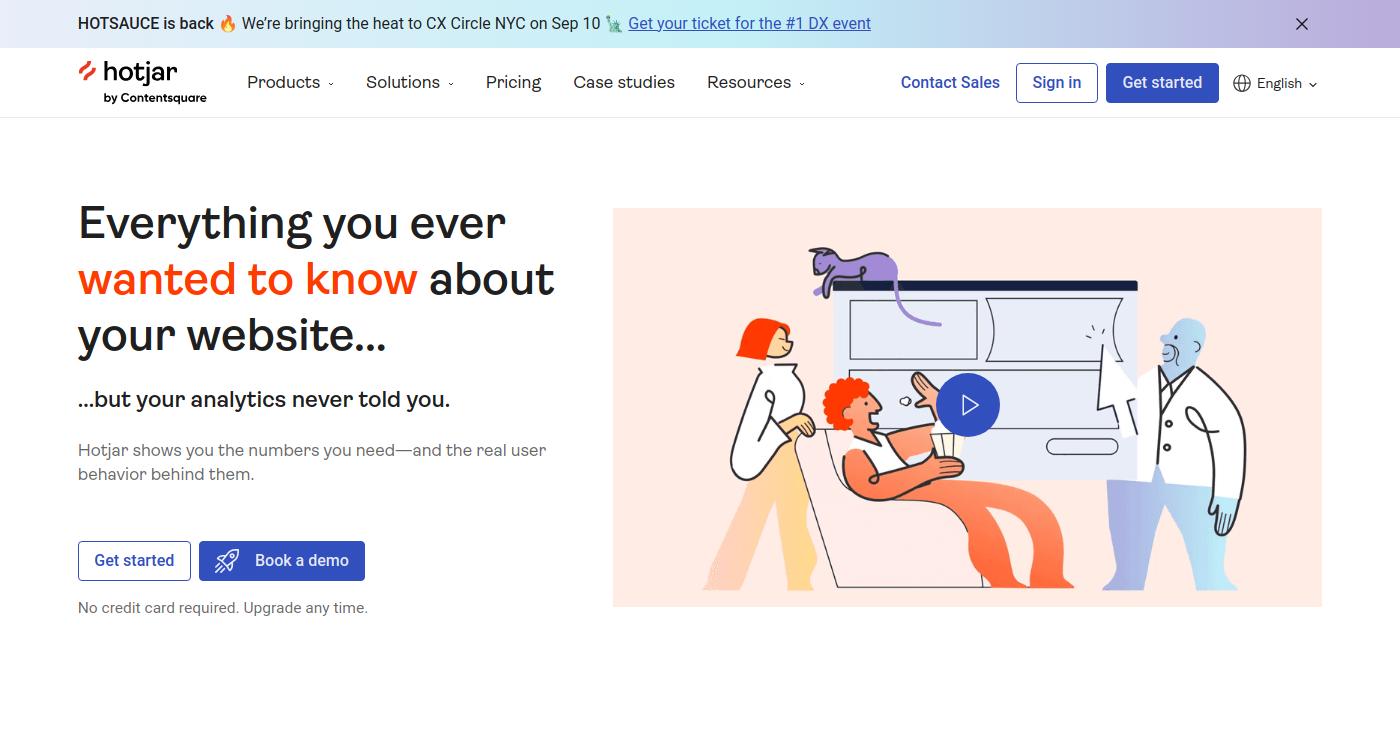
Pros
- Excellent insights into user behavior.
- User-friendly interface.
- Great for improving website UX.
Cons
- Limited features in the free plan.
- Might not cover all marketing automation needs.
Key Features
- Heatmaps: Visualize user engagement and interactions on your site.
- Session Recordings: Watch how users navigate your website.
- Feedback Tools: Collect user feedback directly through your site.
Pricing
Hotjar offers a free basic plan, with the Plus plan starting at $39/month. For more details, visit their pricing page.
7. Ortto
Best for modern customer journey analytics
Ortto combines email and SMS marketing with analytics to provide a comprehensive view of customer journeys, making it ideal for modern marketers.
Pros
- Strong analytics capabilities.
- Modern user interface.
- Good for startups.
Cons
- Higher pricing for advanced features.
- Limited support options.
Key Features
- Email and SMS Marketing: Engage customers through multiple channels.
- In-App Messaging: Communicate with users while they're using your app.
- Customer Journey Analytics: Track user interactions across various touchpoints.
Pricing
Ortto offers a Professional plan starting at $599/month for 10,000 contacts. Check their pricing page for more details.
8. EngageBay
Best for budget-conscious businesses
EngageBay is an affordable all-in-one solution for small businesses looking to streamline their marketing efforts without breaking the bank.
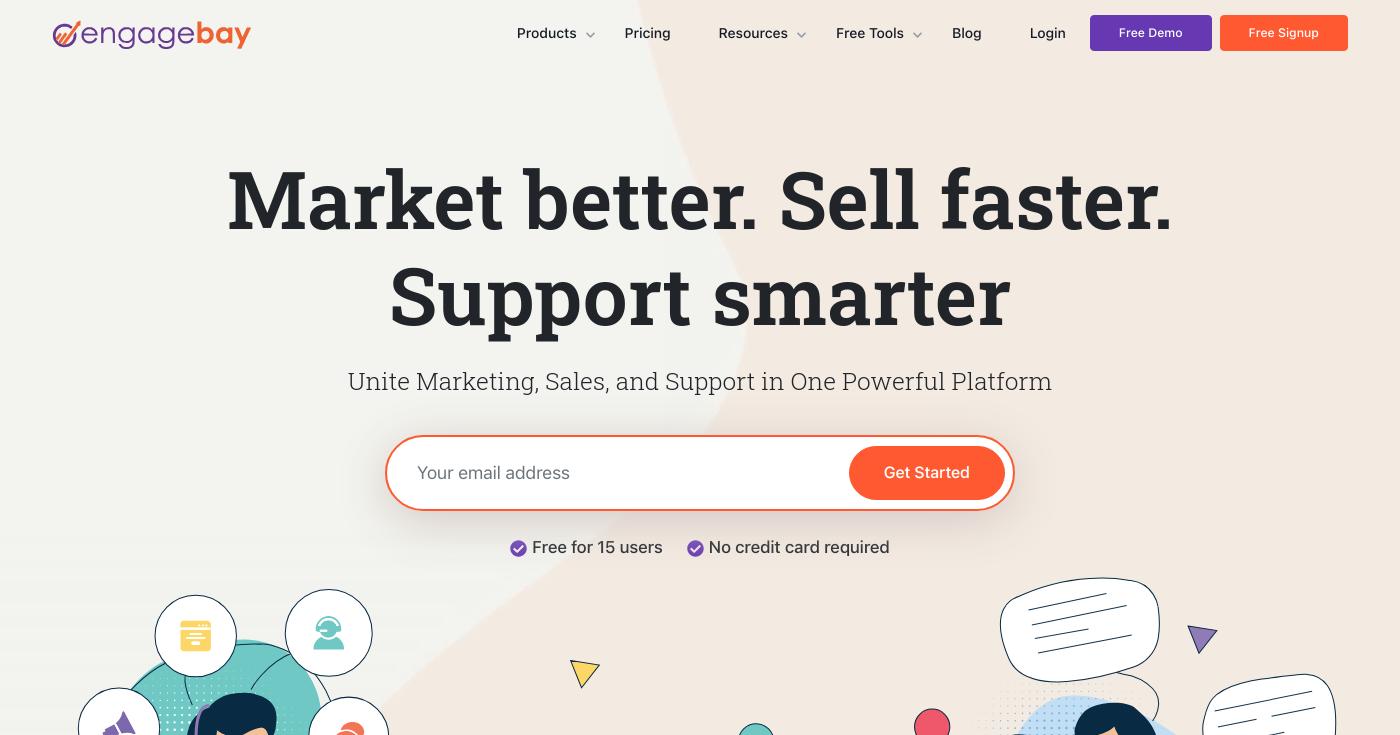
Pros
- Very affordable pricing.
- Comprehensive feature set for small businesses.
- Free plan available.
Cons
- Some advanced features may be lacking.
- Limited customization options.
Key Features
- Email Marketing: Create effective email campaigns easily.
- CRM: Manage customer relationships and data.
- Live Chat: Engage visitors in real-time through chat.
Pricing
EngageBay offers a free plan with essential features, and paid plans starting at $12.74/month. Visit their pricing page for details.
9. Customer.io
Best for targeted messaging
Customer.io is designed for sending targeted email campaigns based on user behavior, making it a powerful tool for personalized marketing.
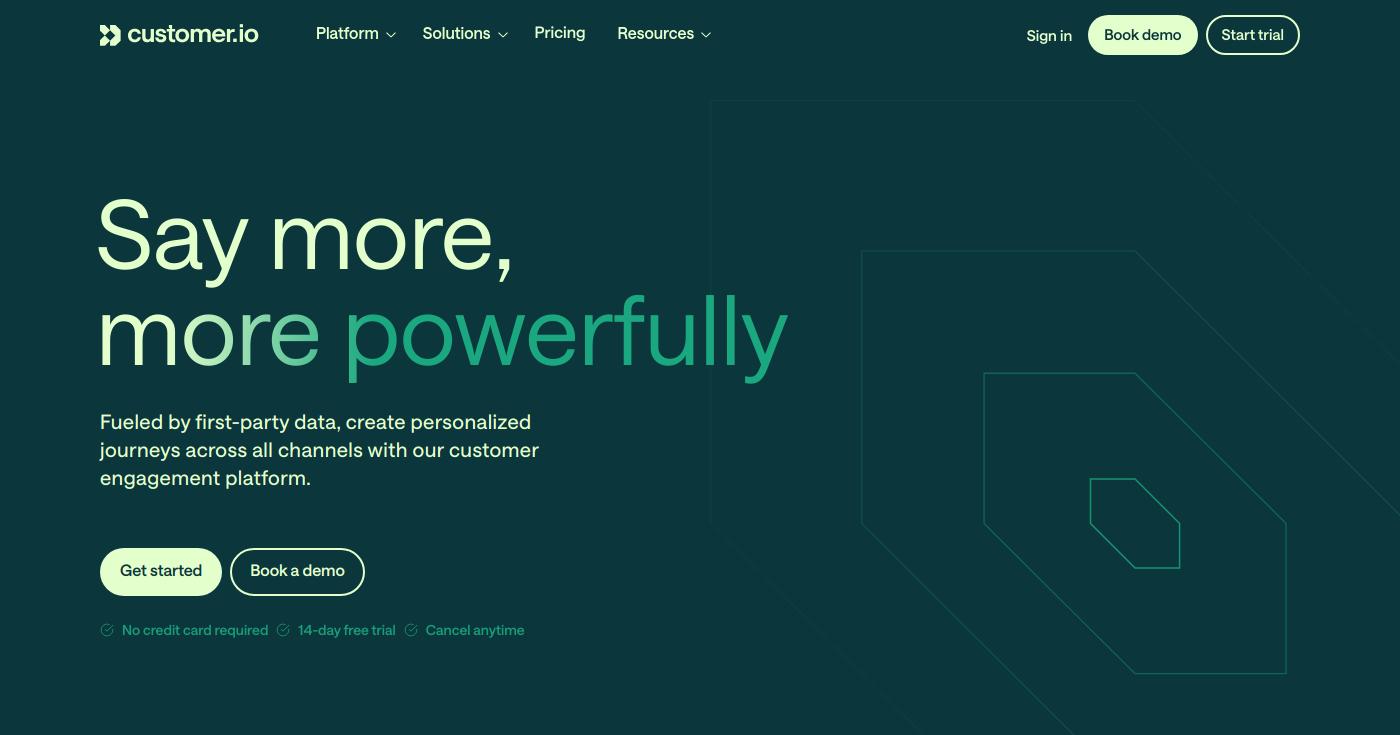
Pros
- Highly customizable workflows.
- Strong analytics and reporting features.
- Excellent for targeted email marketing.
Cons
- Can be complex for new users.
- Higher learning curve compared to simpler tools.
Key Features
- Targeted Email Campaigns: Send personalized messages based on user actions.
- User Segmentation: Create segments for more effective targeting.
- A/B Testing: Optimize campaigns through testing different variations.
Pricing
Customer.io offers a free tier, with paid plans starting at $150/month. For more details, visit their pricing page.
10. Zapier
Best for workflow automation and app integration
Zapier excels in connecting various apps and automating workflows, making it a versatile tool for marketers looking to streamline tasks.
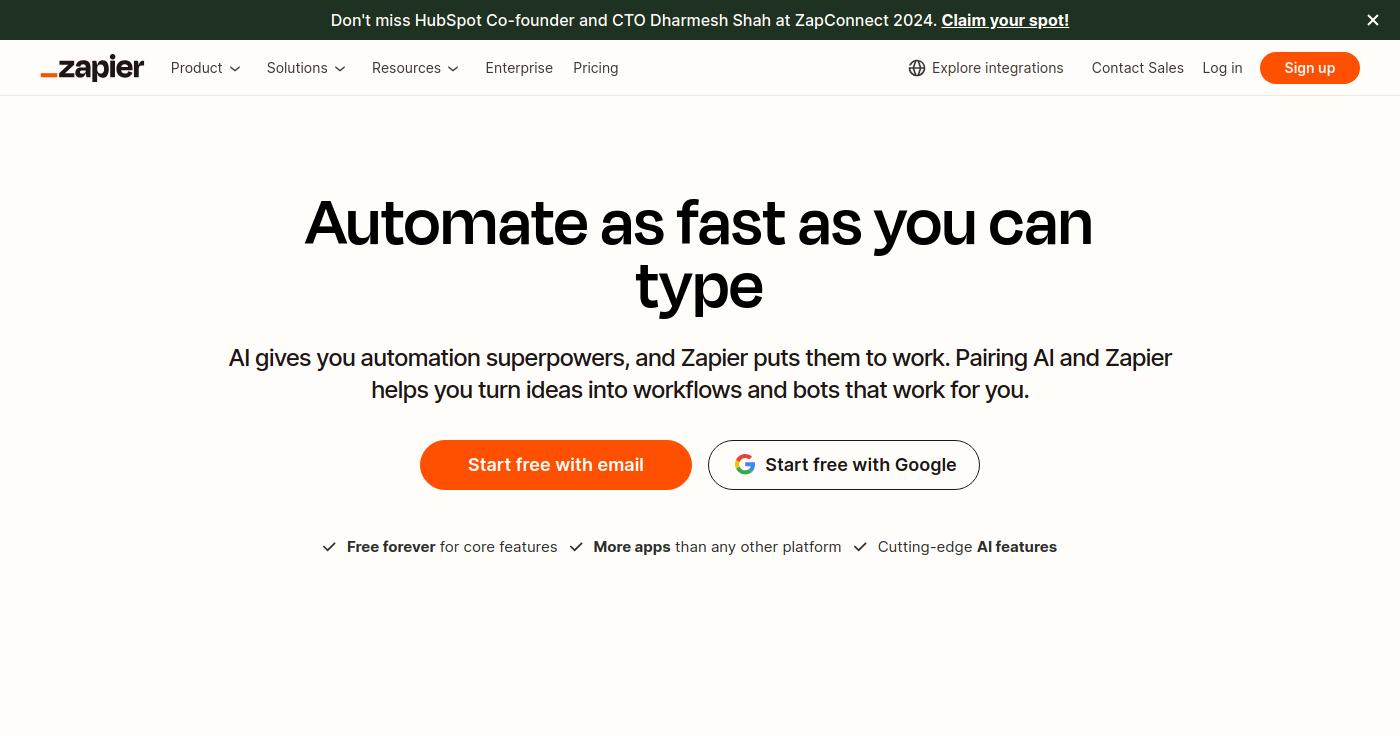
Pros
- Extremely versatile with thousands of app integrations.
- Simple to set up automations.
- Great for reducing repetitive tasks.
Cons
- Can become expensive with higher task limits.
- Limited functionality in the free plan.
Key Features
- Workflow Automation: Automate tasks between different applications.
- App Integration: Connect and manage data across various platforms.
- Data Management: Streamline data entry and management tasks.
Pricing
Zapier offers a free plan for 100 tasks/month, with Starter plans starting at $19/month. For more information, check their pricing page.
How to Choose the Right SaaS Marketing Automation Tools for Your Needs
Selecting the ideal SaaS marketing automation tools depends on your specific requirements and use case. Consider these crucial factors:
- Features: Identify the features that are most relevant to your marketing strategy.
- Budget: Consider your budget and the ROI you expect from the tool.
- Scalability: Ensure the tool can grow with your business.
- Integration: Look for tools that integrate well with your existing software stack.
Emerging Trends in SaaS Marketing Automation Tools
- The integration of AI and machine learning is becoming more prevalent, allowing for enhanced personalization and efficiency.
- Businesses are increasingly focusing on multi-channel campaigns to reach customers where they are most active.
- There is a growing emphasis on balancing automation with personal customer interactions to avoid potential pitfalls of over-reliance on technology.
Conclusion: Making the Right Choice
Choosing the right SaaS marketing automation tools can dramatically enhance your marketing efforts by improving efficiency and increasing engagement.
As your business grows, these tools can help you adapt your marketing strategies to meet the evolving needs of your customers.
Evaluate your needs carefully, explore the top picks, and select a tool that aligns with your marketing goals.
Frequently Asked Questions
Some of the most frequently asked questions about SaaS marketing automation tools are:
What are the best SaaS marketing automation tools for 2024?
The best tools include HubSpot, ActiveCampaign, Mailchimp, and Drip among others, each catering to different business needs.
How do marketing automation tools improve customer engagement?
These tools automate communication, allowing for personalized messaging and timely interactions that enhance customer experience.
Is there a free version of popular marketing automation tools?
Yes, many tools like Mailchimp, EngageBay, and Zapier offer free plans with limited features.
How to choose a marketing automation tool for a small business?
Focus on affordability, essential features, ease of use, and the ability to scale as your business grows.
What future trends should I watch for in marketing automation?
Keep an eye on AI integration, personalized marketing strategies, and advancements in multi-channel campaign management.
This structured listicle provides a comprehensive overview of the top marketing automation tools for SaaS companies in 2024, ensuring readers can make informed decisions based on their unique needs and budget.